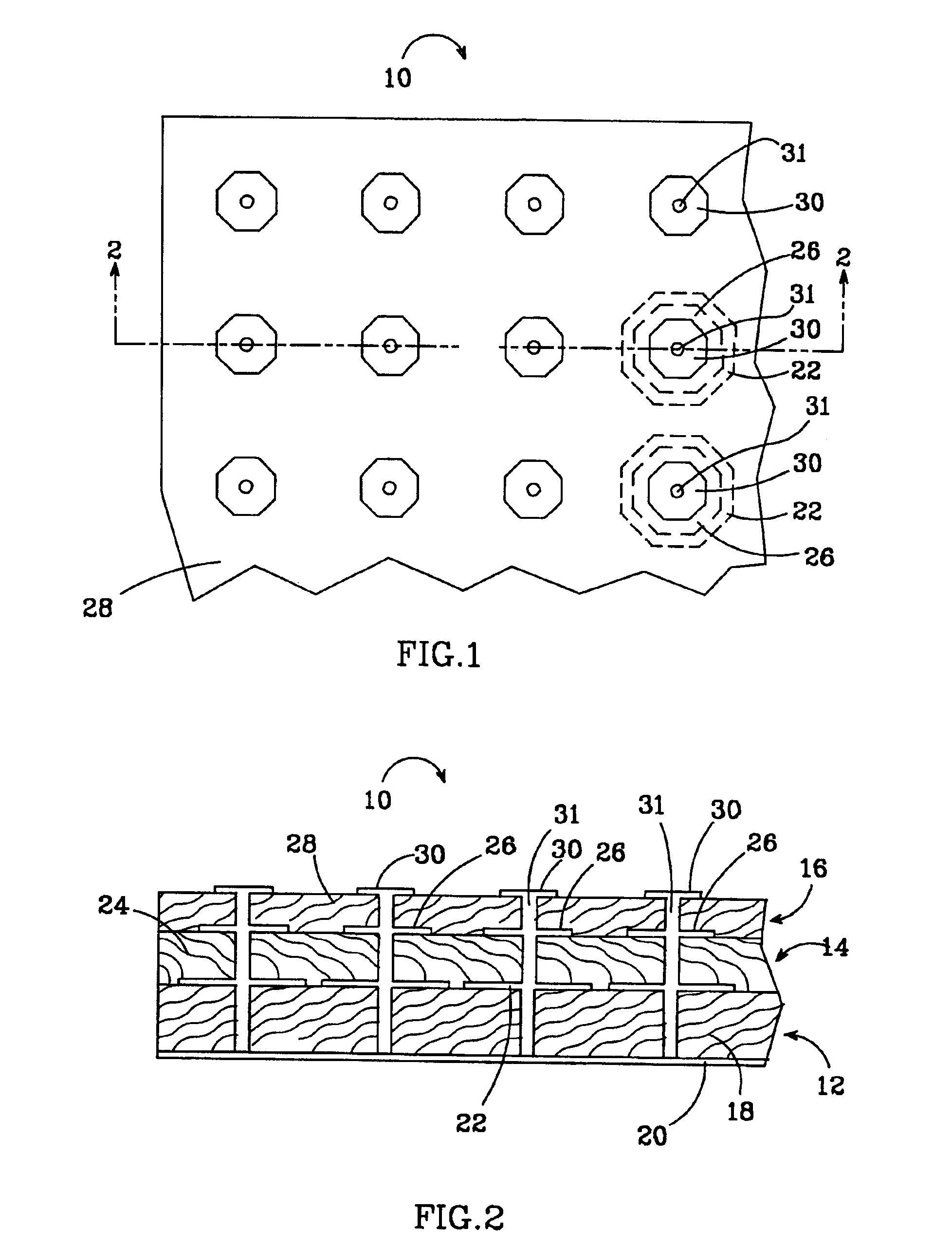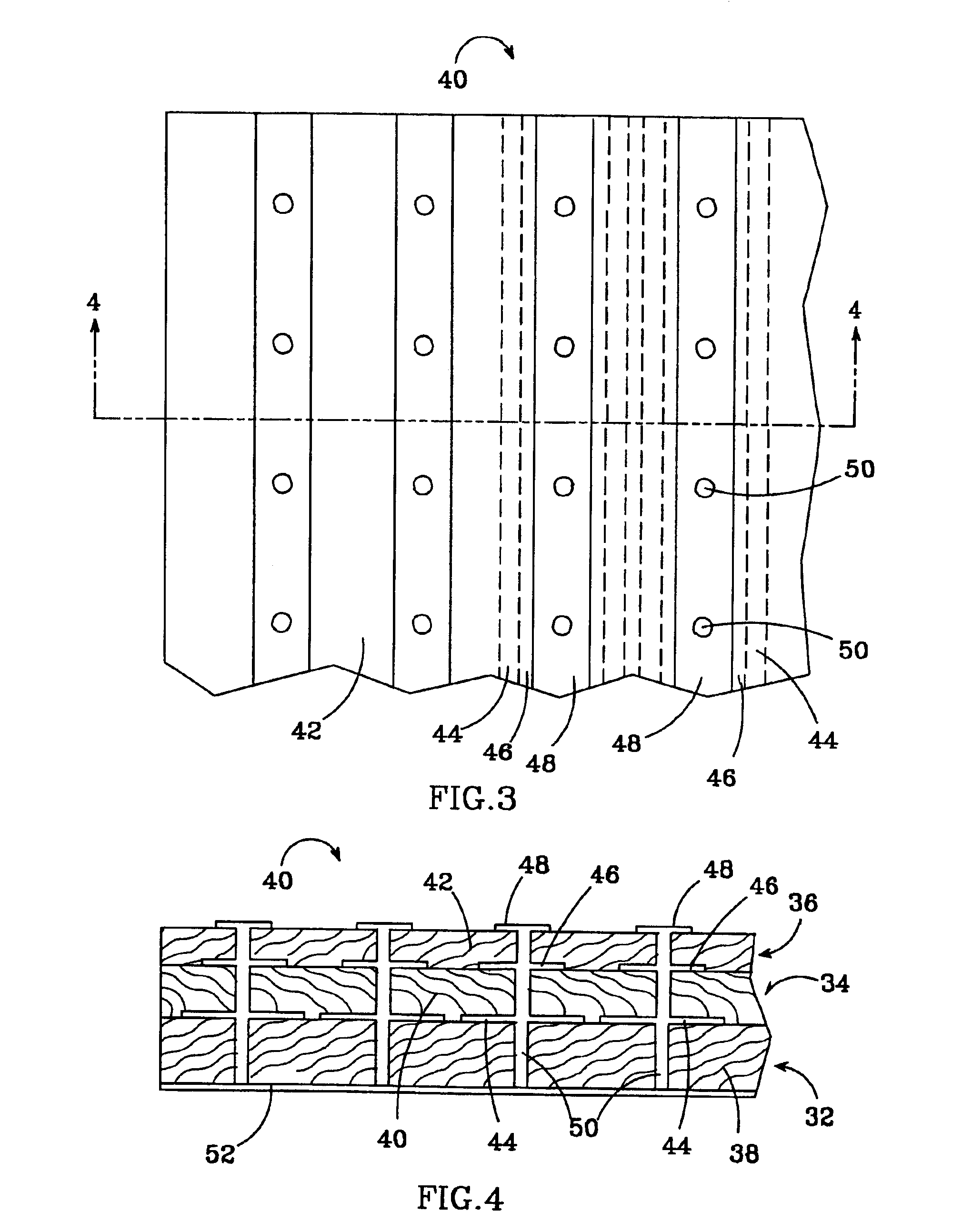High impedance structures for multifrequency antennas and waveguides
- Summary
- Abstract
- Description
- Claims
- Application Information
AI Technical Summary
Benefits of technology
Problems solved by technology
Method used
Image
Examples
Embodiment Construction
[0034]FIGS. 1 and 2 show one embodiment of a new layered high impedance structure 10 in which conductive hexagonal patches are provided on each layer. The new structure can have different numbers of layers, depending upon the number of different signal frequencies to be transmitted. Referring to FIG. 2, the embodiment shown has three similar layers 12, 14, and 16, with each layer having different dimensions or made from different materials such that each presents as a high impedance to the E field from a different respective signal frequency bandwidth.
[0035]As further shown in FIG. 2, the bottom layer 12 comprises a substrate of dielectric material 18 with an array of preferably equally spaced conductive patches 22 on its upper surface (see also FIG. 1). The bottom layer also has a conductive layer 20 on its bottom surface. The second layer 14 does not have a conductive layer, but is otherwise similar to and formed over the bottom layer 12 with conductive patches 26 (see also FIG. 1...
PUM
 Login to View More
Login to View More Abstract
Description
Claims
Application Information
 Login to View More
Login to View More - R&D
- Intellectual Property
- Life Sciences
- Materials
- Tech Scout
- Unparalleled Data Quality
- Higher Quality Content
- 60% Fewer Hallucinations
Browse by: Latest US Patents, China's latest patents, Technical Efficacy Thesaurus, Application Domain, Technology Topic, Popular Technical Reports.
© 2025 PatSnap. All rights reserved.Legal|Privacy policy|Modern Slavery Act Transparency Statement|Sitemap|About US| Contact US: help@patsnap.com



